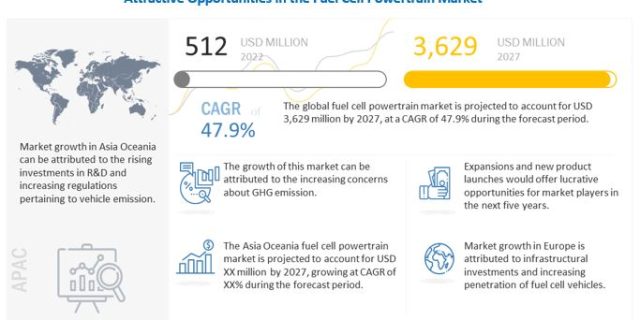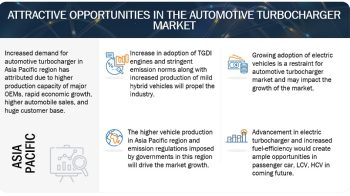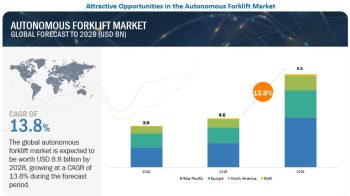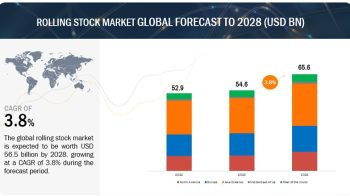
The projected growth of the global fuel cell powertrain market is significant, with the market size expected to increase from USD 512 million in 2020 to USD 3,629 million by 2027, at a CAGR of 47.9%. Asia Oceania is expected to be the largest market by 2027, followed by North America and Europe. The Asia Oceania region is witnessing increasing developments, investments, and efforts to popularize fuel cell vehicles, which will drive the market. Countries like Japan, China, and South Korea are experiencing a growing demand for Fuel Cell Electric Vehicles (FCEVs) due to their longer range, faster refueling compared to other electric vehicles, and supportive government policies with incentives. While the region is home to fewer companies in the fuel cell powertrain market compared to North America and Europe, it has recorded the highest number of fuel cell vehicle sales. For instance, in 2021, Toyota Mirai was the top-selling FCEV model globally, surpassing other models like Hyundai NEXO.
In terms of components, the fuel cell system segment is expected to dominate the market during the forecast period. Extensive research and development efforts are focused on enhancing the safety and performance of fuel cells. The fuel cell system comprises a fuel cell stack that generates power and a fuel processor that converts fuel into a usable form. Companies in the fuel cell component sector prioritize the overall performance of fuel cell systems. Platinum is often used as a catalyst in the fuel stack to enhance the electrochemical reaction and improve fuel cell efficiency. Consequently, the fuel cell system segment is projected to generate the highest revenue in the fuel cell powertrain market.
Request Sample Report: https://www.marketsandmarkets.com/requestsampleNew.asp?id=158141762
The passenger car segment is estimated to be the largest vehicle type in the fuel cell powertrain market. The availability of a wide range of passenger car models contributes to a significant portion of fuel cell vehicle sales. Factors such as a high adoption rate, increasing per capita income, and growing demand for personal mobility drive the market for fuel cell passenger cars. Additionally, the UK government’s plan to convert ICE (Internal Combustion Engine) taxi fleets into zero-emission vehicles, along with the introduction of dedicated taxi charging infrastructure across the country, will create significant growth opportunities in the coming years.
Europe is expected to have the fastest-growing market for fuel cell powertrains during the forecast period. Germany is projected to be the largest automotive fuel cell market in the region, driven by government investments in hydrogen infrastructure and the increasing adoption of fuel cell buses in public transportation. Scandinavian countries are also expected to hold a significant market share. Government support and funding initiatives play a crucial role in driving the European fuel cell powertrain market. Europe has set ambitious goals for reducing CO2 emissions and has established programs like the Fuel Cells and Hydrogen Joint Undertaking (FCHJU) to accelerate the development and commercialization of fuel cell and hydrogen technologies.
Inquire Before Buying: https://www.marketsandmarkets.com/Enquiry_Before_BuyingNew.asp?id=158141762
The major players in the global fuel cell powertrain market include Ballard Power Systems, Cummins Inc., Denso Corporation, Robert Bosch GmbH, and FEV. These companies are at the forefront of the industry, offering a range of products and solutions in the fuel cell powertrain market.
Related Reports:
Automotive Fuel Cell Market – Global forecast to 2030
Low-Carbon Propulsion Market – Global Forecast to 2027


